Abstract
The digestion kinetics of a variety of pure celluloses were examined by using an in vitro assay employing mixed ruminal microflora and a modified detergent extraction procedure to recover residual cellulose. Digestion of all of the celluloses was described by a discontinuous first-order rate equation to yield digestion rate constants and discrete lag times. These kinetic parameters were compared with the relative crystallinity indices and estimated accessible surface areas of the celluloses. For type I celluloses having similar crystallinities and simple nonaggregating particle morphologies, the fermentation rate constants displayed a strong positive correlation (r2 = 0.978) with gross specific surface area; lag time exhibited a weaker, negative correlation (r2 = 0.930) with gross specific surface area. Crystallinity was shown to have a relatively minor effect on the digestion rate and lag time. Swelling of microcrystalline cellulose with 72 to 77% phosphoric acid yielded substrates which were fermented slightly more rapidly than the original material. However, treatment with higher concentrations of phosphoric acid resulted in a more slowly fermented substrate, despite a decrease in crystallinity and an increase in pore volume. This reduced fermentation rate was apparently due to the partial conversion of the cellulose from the type I to the type II allomorph, since mercerized (type II) cellulose was also fermented more slowly, and only after a much longer lag period. The results are consistent with earlier evidence for the cell-associated nature of cellulolytic enzymes of ruminal bacteria and suggest that ruminal microflora do not rapidly adapt to utilization of celluloses with altered unit cell structures.
Full text
PDF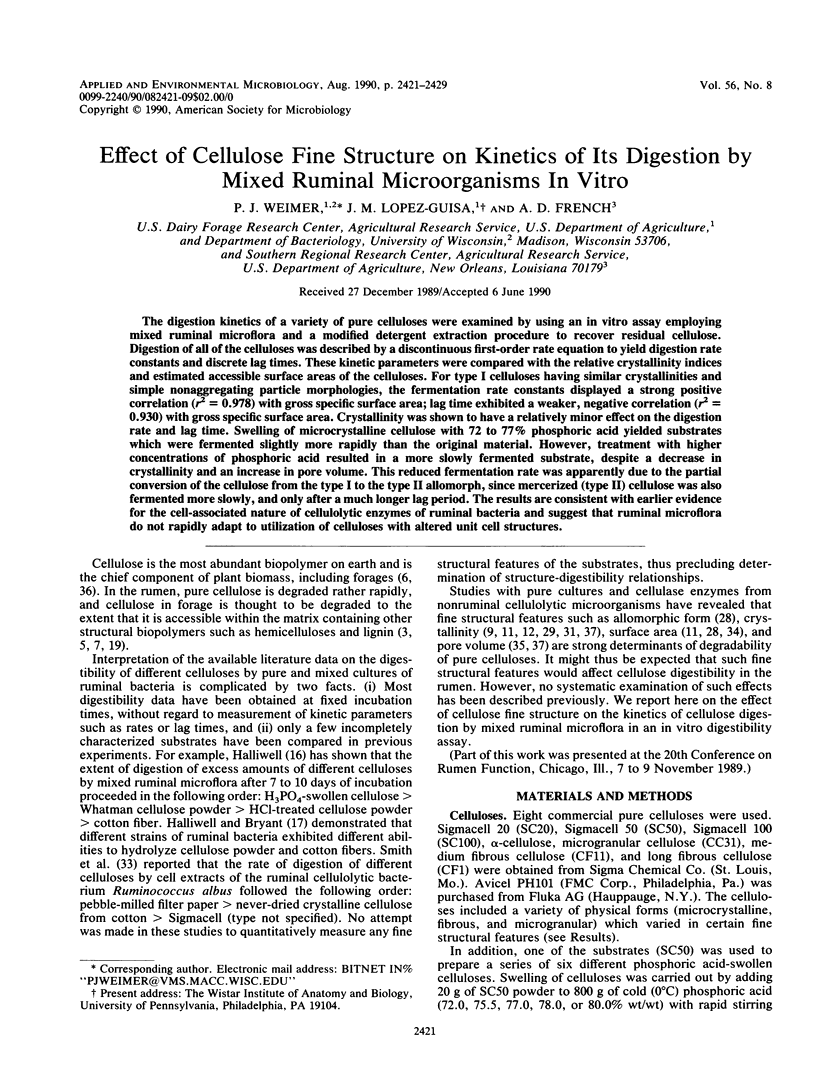
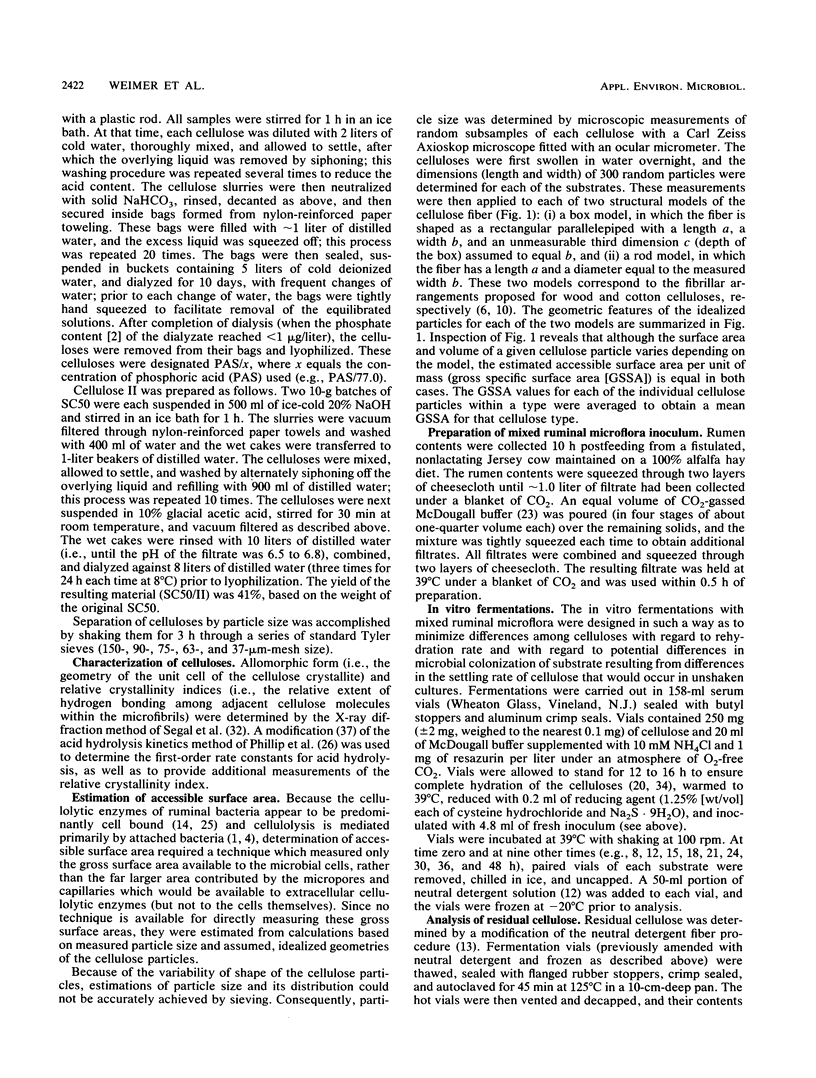
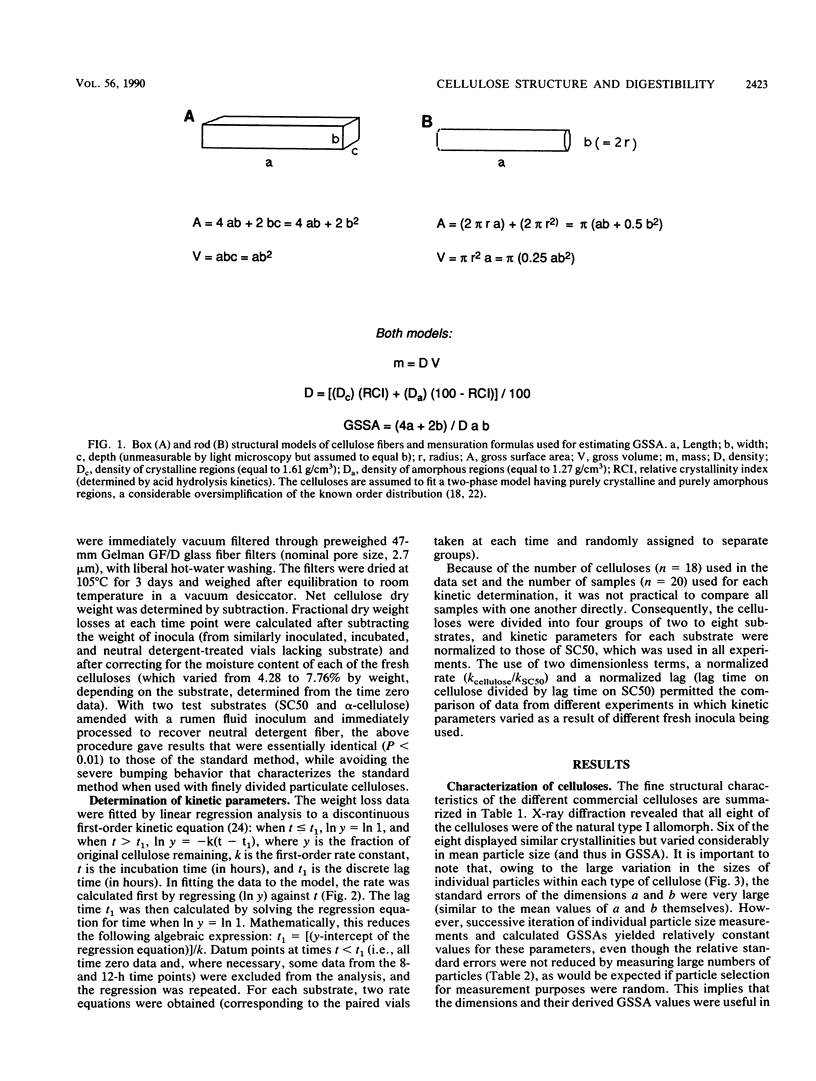
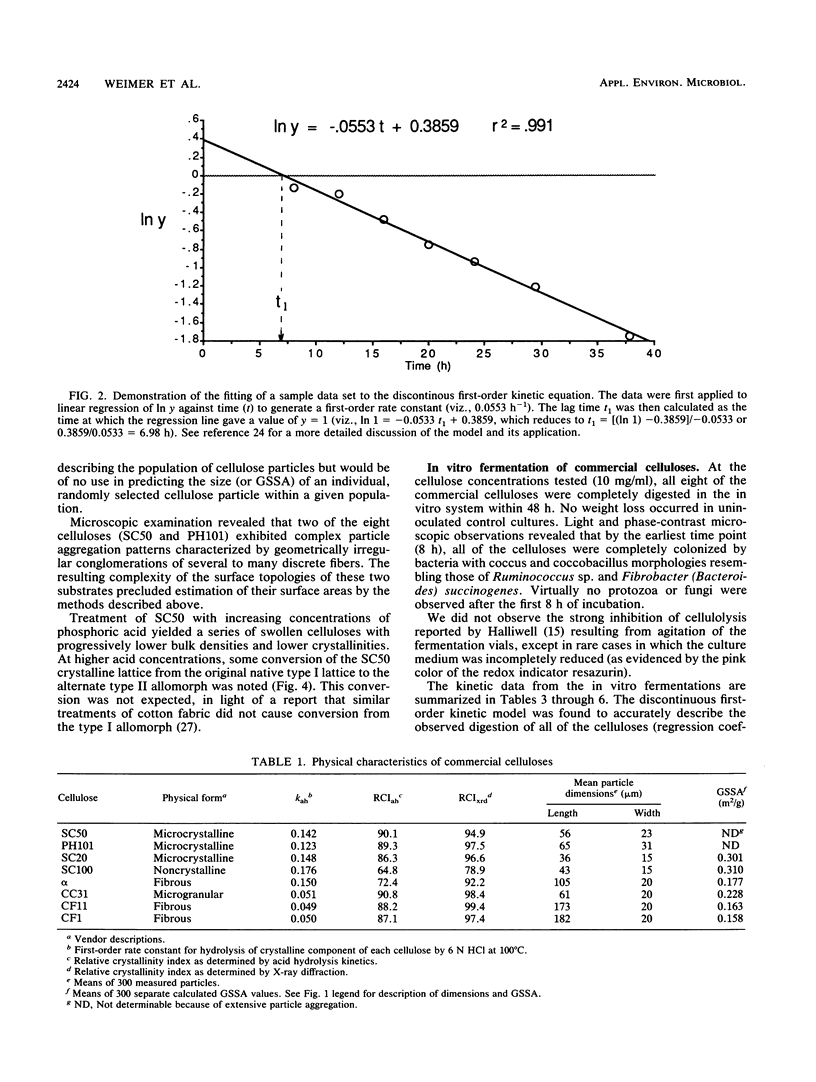
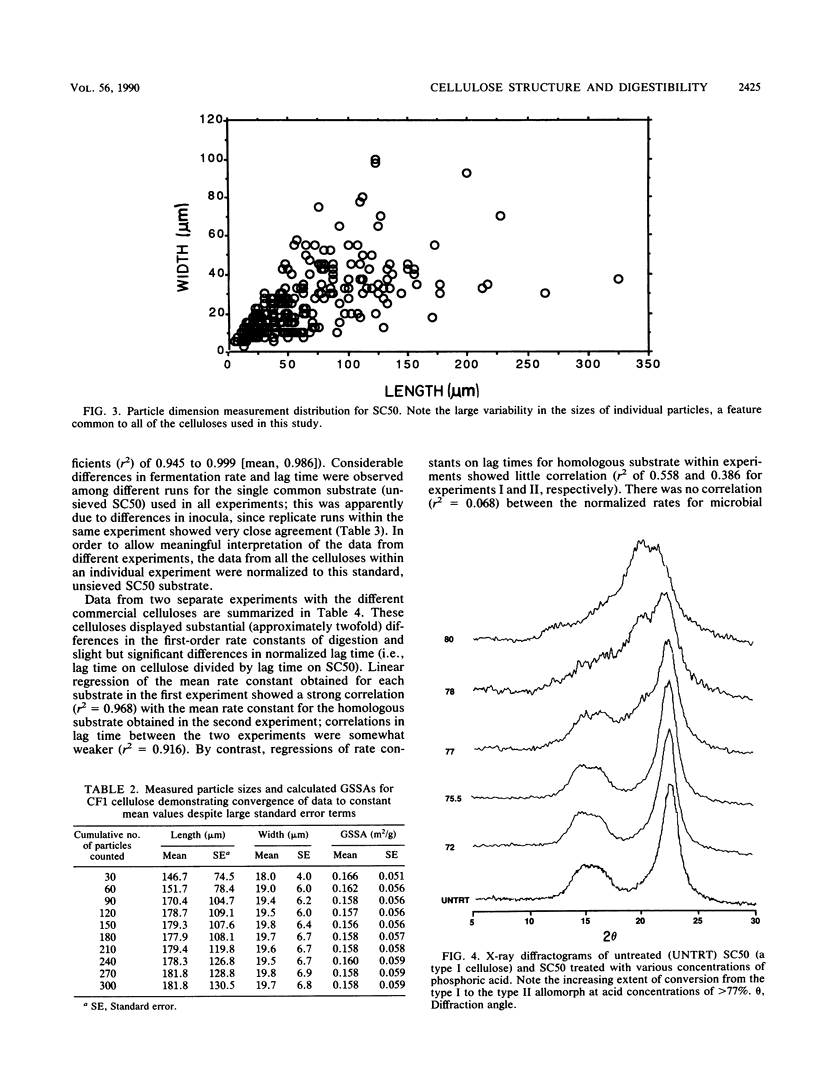

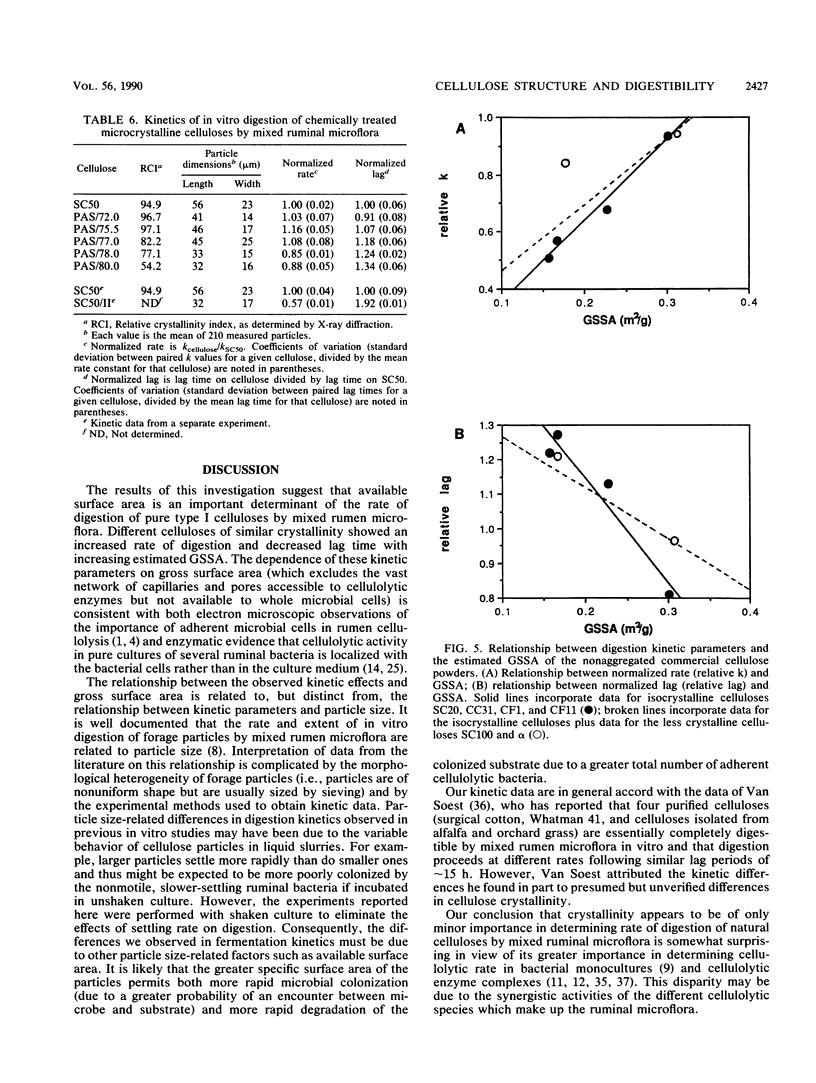
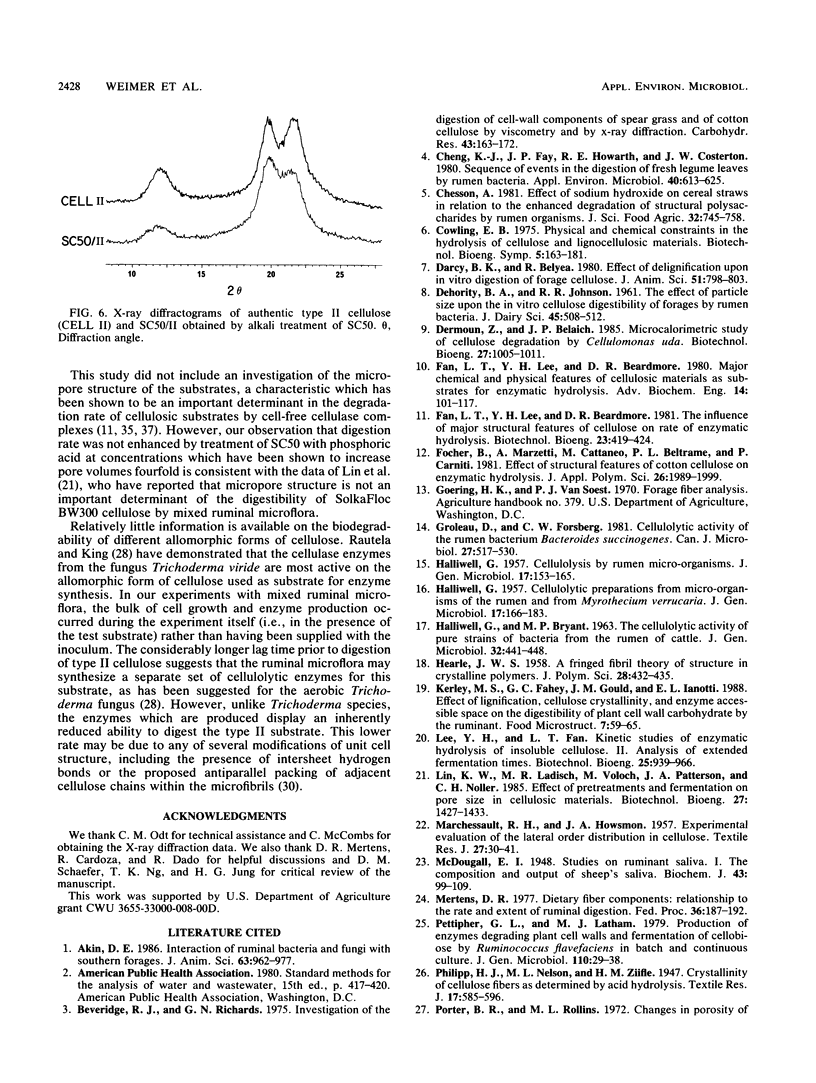

Selected References
These references are in PubMed. This may not be the complete list of references from this article.
- Cheng K. J., Fay J. P., Howarth R. E., Costerton J. W. Sequence of events in the digestion of fresh legume leaves by rumen bacteria. Appl Environ Microbiol. 1980 Sep;40(3):613–625. doi: 10.1128/aem.40.3.613-625.1980. [DOI] [PMC free article] [PubMed] [Google Scholar]
- Cowling E. B. Physical and chemical constraints in the hydrolysis of cellulose and lignocellulosic materials. Biotechnol Bioeng Symp. 1975;(5):163–181. [PubMed] [Google Scholar]
- Darcy B. K., Belyea R. L. Effect of delignification upon in vitro digestion of forage cellulose. J Anim Sci. 1980 Oct;51(4):798–803. doi: 10.2527/jas1980.514798x. [DOI] [PubMed] [Google Scholar]
- Groleau D., Forsberg C. W. Cellulolytic activity of the rumen bacterium Bacteroides succinogenes. Can J Microbiol. 1981 May;27(5):517–530. doi: 10.1139/m81-077. [DOI] [PubMed] [Google Scholar]
- HALLIWELL G., BRYANT M. P. THE CELLULOLYTIC ACTIVITY OF PURE STRAINS OF BACTERIA FROM THE RUMEN OF CATTLE. J Gen Microbiol. 1963 Sep;32:441–448. doi: 10.1099/00221287-32-3-441. [DOI] [PubMed] [Google Scholar]
- HALLIWELL G. Cellulolysis by rumen micro-organisms. J Gen Microbiol. 1957 Aug;17(1):153–165. doi: 10.1099/00221287-17-1-153. [DOI] [PubMed] [Google Scholar]
- HALLIWELL G. Cellulolytic preparations from micro-organisms of the rumen and from Myrothecium verrucaria. J Gen Microbiol. 1957 Aug;17(1):166–183. doi: 10.1099/00221287-17-1-166. [DOI] [PubMed] [Google Scholar]
- McDougall E. I. Studies on ruminant saliva. 1. The composition and output of sheep's saliva. Biochem J. 1948;43(1):99–109. [PMC free article] [PubMed] [Google Scholar]
- Mertens D. R. Dietary fiber components: relationship to the rate and extent of ruminal digestion. Fed Proc. 1977 Feb;36(2):187–192. [PubMed] [Google Scholar]
- Rautela G. S., King K. W. Significance of the crystal structure of cellulose in the production and action of cellulase. Arch Biochem Biophys. 1968 Mar 11;123(3):589–601. doi: 10.1016/0003-9861(68)90180-x. [DOI] [PubMed] [Google Scholar]
- Smith W. R., Yu I., Hungate R. E. Factors affecting cellulolysis by Ruminococcus albus. J Bacteriol. 1973 May;114(2):729–737. doi: 10.1128/jb.114.2.729-737.1973. [DOI] [PMC free article] [PubMed] [Google Scholar]
- Van Soest P. J. The uniformity and nutritive availability of cellulose. Fed Proc. 1973 Jul;32(7):1804–1808. [PubMed] [Google Scholar]


